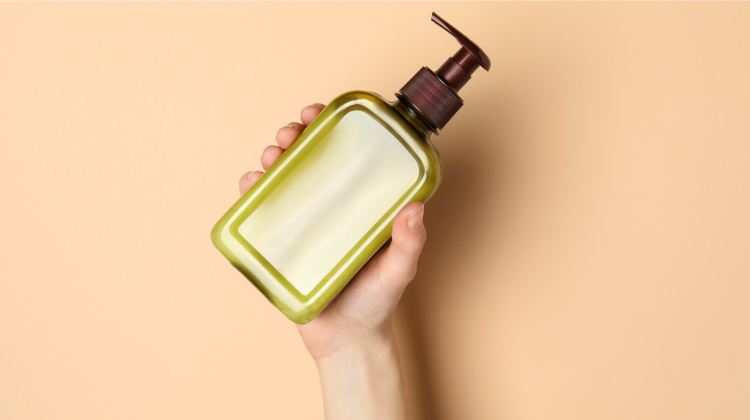
Are you curious about the latest hair care trend, pre-pooing, and how it works for low porosity hair? Don't worry, we've got your back! We've researched extensively and compiled the best tips and techniques for pre-pooing low porosity hair, just for you.
We'll explore everything from top-notch pre-poo recipes to the ideal frequency and duration for pre-pooing your hair. And the cherry on top? We’re sharing a selection of fabulous DIY pre-poo treatments specifically for low porosity hair, including some personal favorites. Are you ready to pamper your hair and unlock its true potential? Let's jump in!
What Is Pre-Poo for Low Porosity Hair?
Well, pre-poo (short for pre-shampoo) is a hair treatment applied before shampooing(1) to protect, nourish, and prep your hair for the cleansing process. It's particularly crucial for low porosity hair because this hair type has tightly packed cuticles, making it harder for moisture to penetrate the hair shaft.
Pre-poo treatments usually consist of oils, conditioners, or other hair-loving ingredients that help to soften and detangle your hair while also adding moisture. This process minimizes the chance of breakage and makes the hair more manageable. Plus, it serves as a barrier to prevent harsh shampoos from stripping away your hair's natural oils.
For low porosity hair, good pre-poo products or homemade pre-poo recipes can work wonders. They're specially formulated to gently open up your hair cuticles, allowing for better absorption of moisture and nutrients during the washing and conditioning process. So, if you have low porosity hair, pre-poo treatments are an essential step in your haircare routine to keep your locks looking and feeling their best!
6 Benefits of Pre-Pooing Low Porosity Hair
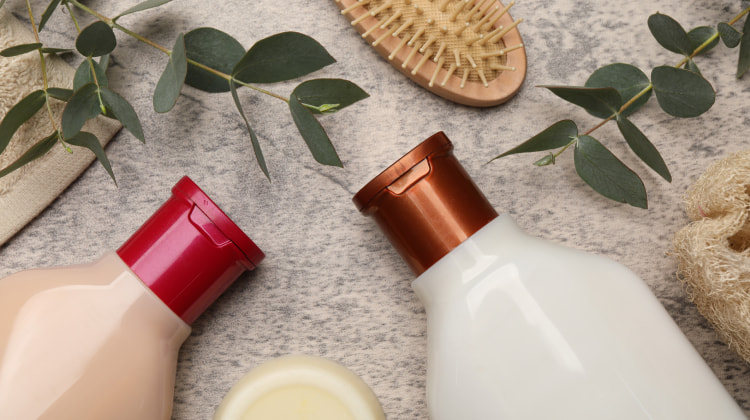
Now that we know what pre-poo is, let's talk more deeply about the fantastic benefits of pre-pooing low porosity hair. Trust me, once you learn about these perks, you'll want to make pre-pooing a regular part of your haircare routine!
Moisture Retention
Pre-poo treatments help low porosity hair retain moisture by gently opening up the cuticles, allowing moisture to enter the hair shaft more easily. This not only provides immediate hydration but also contributes to long-lasting moisture retention. Your hair will thank you for the extra hydration and look more radiant as a result!
Easier Detangling
We all know how frustrating it can be to detangle low porosity hair, especially when it's prone to knots and tangles. Pre-poo treatments for low porosity 4c hair can save you time and tears by softening and smoothing the hair, making it much easier to detangle and style. This will also minimize the chances of breakage and damage to your hair while brushing or combing.
Protection from Harsh Shampoos
Pre-pooing acts as a shield, protecting your hair from the potentially damaging effects of shampoos that can strip away natural oils. Your hair will feel cleaner without feeling stripped or dry. This added protection will help maintain the integrity of your hair and keep it looking and feeling its best.
Enhanced Manageability
Pre-poo treatments can improve the overall manageability of low porosity hair by reducing frizz, increasing shine, and making it more responsive to styling. Your hair will become more cooperative, making your styling routine a breeze and helping your hairstyles last longer throughout the day.
Improved Hair Health
By providing your hair with the necessary nutrients and hydration, pre-poo treatments promote stronger, healthier hair. Say goodbye to breakage and hello to beautiful, bouncy locks! Regular pre-poo treatments can lead to fewer split ends, less shedding, and more resilient hair that can withstand daily wear and tear.
Better Product Absorption
Pre-pooing low porosity hair prepares it for better absorption of other hair products, such as conditioners and leave-in treatments. By opening up the cuticles slightly, your hair can fully benefit from the nourishing ingredients in your haircare products, making them more effective and giving you more bang for your buck.
In a nutshell, pre-pooing low porosity hair can make a world of difference, transforming your locks from dull and lifeless to vibrant and healthy. So, why not give it a try and experience the benefits for yourself?
5 Best DIY Pre-Poo Recipes for Low Porosity Hair
Ready to treat your low porosity hair to some fantastic DIY pre-poo treatments? We've got you covered! Here are our five best pre-poo recipes for low porosity hair. Each recipe includes a list of ingredients, step-by-step instructions, and a brief description of how it benefits your hair. Let's get started!
Aloe Vera & Coconut Oil Pre-Poo
Ingredients:
- 1/4 cup aloe vera gel
- 2 tbsp coconut oil
Instructions:
- Mix aloe vera gel and coconut oil.
- Apply to dry hair, focusing on ends.
- Massage scalp for 2-3 minutes.
- Cover hair for 30-60 minutes.
- Rinse and follow with shampoo and conditioner.
Aloe vera(2) gently opens cuticles for better moisture absorption, while coconut oil nourishes and prevents protein loss(3). Aloe vera and coconut oil pre-poo for low porosity hair leaves your hair soft, shiny, and manageable.
Honey & Olive Oil Pre-Poo
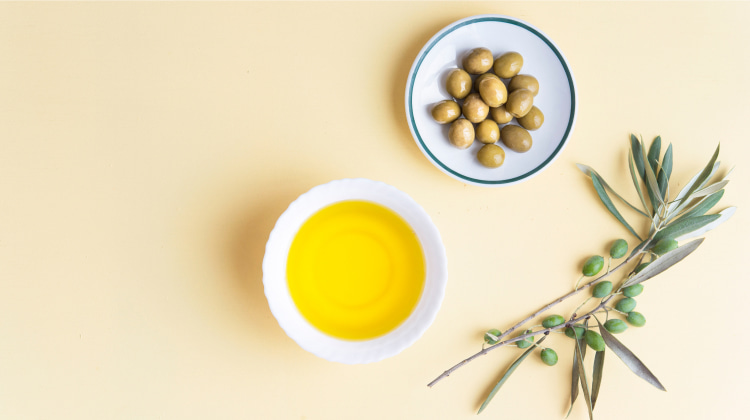
Ingredients:
- 1/4 cup honey
- 3 tbsp olive oil
Instructions:
- Mix honey and olive oil.
- Apply to dry hair, focusing on ends.
- Massage scalp for 2-3 minutes.
- Cover hair for 30-60 minutes.
- Rinse and follow with shampoo and conditioner.
Honey attracts and retains moisture, while olive oil(4) nourishes and softens. This results in hydrated, smooth, and shiny hair that's easy to manage.
Avocado & Jojoba Oil Pre-Poo
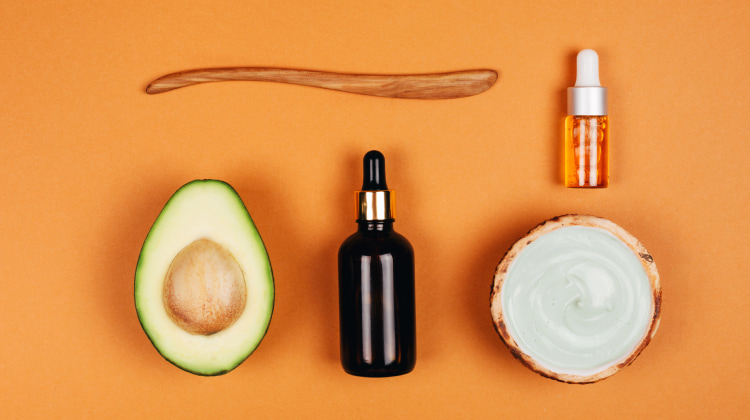
Ingredients:
- 1 ripe avocado
- 2 tbsp jojoba oil
Instructions:
- Mash avocado and mix with jojoba oil.
- Apply to dry hair, focusing on ends.
- Massage scalp for 2-3 minutes.
- Cover hair for 30-60 minutes.
- Rinse and follow with shampoo and conditioner.
Avocado strengthens and moisturizes, while jojoba oil provides lightweight hydration. This treatment leaves hair stronger, healthier, and more manageable.
Banana & Almond Oil Pre-Poo
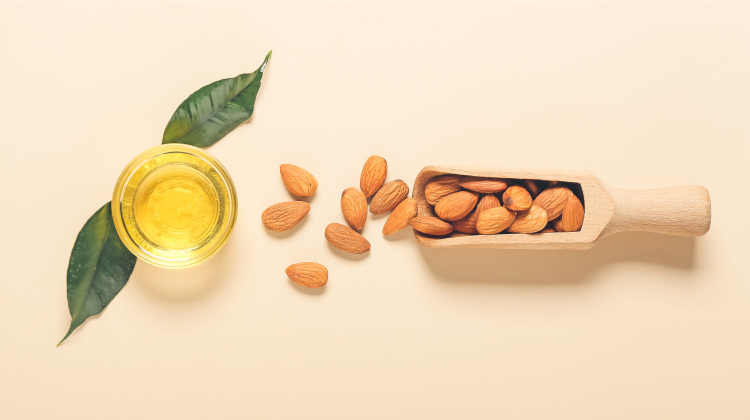
Ingredients:
- 1 ripe banana
- 2 tbsp almond oil
Instructions:
- Blend banana and mix with almond oil.
- Apply to dry hair, focusing on ends.
- Massage scalp for 2-3 minutes.
- Cover hair for 30-60 minutes.
- Rinse and follow with shampoo and conditioner.
Banana improves hair elasticity and prevents breakage, while almond oil softens and strengthens. This pre-poo results in hydrated, revitalized, and manageable hair.
Yogurt & Castor Oil Pre-Poo
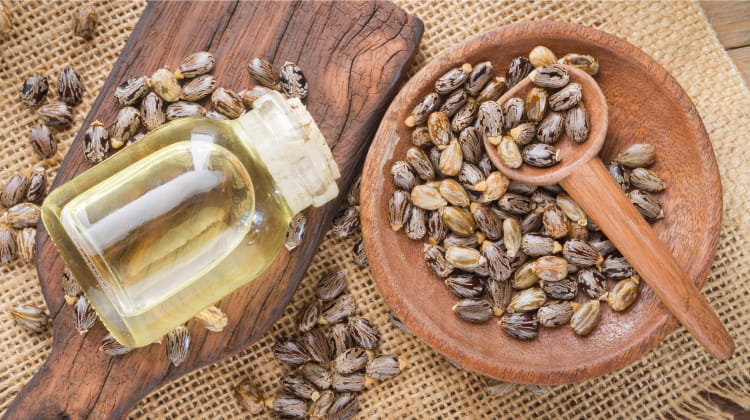
Ingredients:
- 1/2 cup plain yogurt
- 2 tbsp castor oil
Instructions:
- Mix yogurt and castor oil.
- Apply to dry hair, focusing on ends.
- Massage scalp for 2-3 minutes.
- Cover hair for 30-60 minutes.
- Rinse and follow with shampoo and conditioner.
Yogurt strengthens and nourishes, while castor oil promotes hair growth and prevents hair loss. This combination leaves hair stronger, healthier, and less prone to breakage.
Now you have five amazing DIY pre-poo recipes to pamper your low porosity hair! Try them out and see which one works best for you. Your hair will thank you for the extra love and care. Happy pre-pooing!
How Often Should You Pre-Poo Low Porosity Hair?
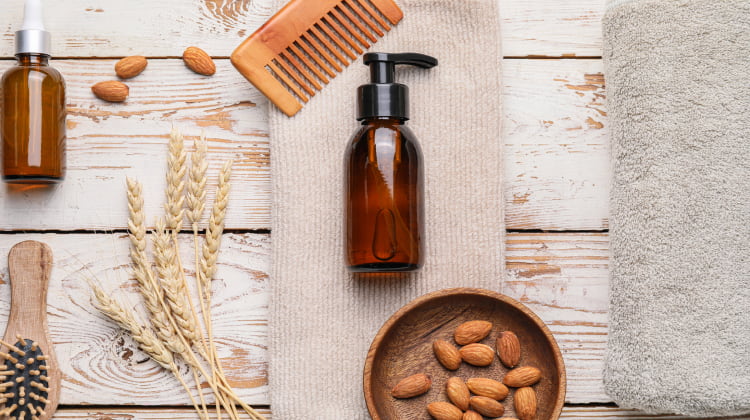
The ideal frequency for pre-pooing low porosity hair is once a week. This regular treatment helps to maintain optimal moisture levels in your hair, ensuring it stays healthy and manageable. However, it's essential to listen to your hair's needs and adjust the frequency accordingly.
You might find that pre-pooing every other week or even once a month works better for your hair. Factors such as your hair's condition, your lifestyle, and the climate you live in can all influence how often you should pre-poo.
The key is to strike the perfect balance that suits your hair type and needs. Experiment with different frequencies and observe how your hair reacts to determine the best pre-poo routine for you.
How Long Should You Pre-Poo Low Porosity Hair?
.jpg)
The optimal duration for a pre-poo treatment on low porosity hair is typically between 30 and 60 minutes. Giving the pre-poo mixture enough time to work its magic ensures that your hair receives the full benefits of the treatment.
Yet again, it's important to remember that everyone's hair is unique, and the ideal duration may vary depending on your hair's specific needs and the ingredients used in the pre-poo.
Some people may find that leaving the pre-poo on for a shorter time, such as 20 minutes, yields desirable results, while others may prefer to keep it on for longer, even overnight. The key is to pay attention to your hair's response and adjust the duration accordingly.
Always monitor your hair closely, especially when trying a new pre-poo recipe, to make sure you achieve the best results without causing any adverse effects.
When Not to Pre-Poo?
Even though pre-poo treatments can work wonders for low porosity hair, there are moments when you might want to hold off on applying them. Let us share with you some situations in which it's better to skip pre-poo treatments:
Protein Overload
If you've been going heavy on protein treatments lately and your hair starts to feel stiff or brittle, that's a signal you might have protein overload. In this case, it's wise to lay off pre-poo treatments containing protein-rich ingredients and focus on moisturizing your hair instead.
Scalp Sensitivity
Suppose you're dealing with a sensitive scalp or are experiencing irritation or inflammation. In that case, it's best to put pre-poo treatments on hold until your scalp feels better, as applying oils or other ingredients might exacerbate the issue.
Allergic Reactions
Always be aware of any allergies you have and avoid pre-poo treatments that include ingredients you're allergic to. Choose recipes with safe ingredients to prevent any unwanted reactions.
Time Crunch
Let's face it, life can get busy, and pre-poo treatments need time to work their magic, usually between 30 and 60 minutes. If you're pressed for time, skipping the pre-poo and focusing on your regular hair care routine might be the best option.
In a nutshell, pay attention to your hair's needs and adjust your routine accordingly. If pre-poo treatments aren't making a difference or are causing issues, it's perfectly fine to take a break or stop using them altogether. Your hair's health comes first always!
Final Thought: Is Pre-Poo Good for Low Porosity Hair?
Pre-poo treatments are indeed a fantastic addition to your hair care regimen if you have low porosity hair. These treatments work to protect, nourish, and hydrate your hair, making it more manageable and less prone to breakage. By incorporating pre-poo treatments into your routine, you'll experience the benefits of softer, shinier, and healthier hair.
With a wide variety of DIY pre-poo recipes for low porosity hair available, you have the freedom to experiment and find the perfect combination of ingredients tailored to your hair's specific needs. So give them a try and watch your hair thrive.
Frequently Asked Questions
Should you pre poo low porosity hair?
Yes, pre-poo treatments benefit low porosity hair by providing hydration, protection, and nourishment, resulting in healthier and more manageable hair.
How do you make pre poo for low porosity hair?
Combine natural ingredients like oils, aloe vera, honey, or avocado, apply to dry hair, let sit for 30-60 minutes, then rinse and continue with your usual hair care routine.
What is a good hair routine for low porosity hair?
A good routine includes pre-poo treatments, gentle cleansing, using heat to enhance deep conditioning, and applying water-based, lightweight leave-in products to retain moisture.
What can be used as a pre poo?
For low porosity hair, you can use the many pre poo oils including coconut, olive, or almond, aloe vera gel, honey, yogurt, avocado, or banana to create a nourishing pre-poo mixture for your hair.
What damages low porosity hair?
Harsh sulfates, heavy silicones, excessive protein, and heat styling without protection can damage low porosity hair, causing dryness and breakage.
References
1. Hair, A.-A. (2015). Contemporary African-American Hair Care Practices - Practical Dermatology. {online} Practical Dermatology. Available at: https://practicaldermatology.com/articles/2015-may/contemporary-african-american-hair-care-practices.
2. Surjushe, A., Vasani, R. and Saple, D. (2008). Aloe vera: A short review. Indian Journal of Dermatology, {online} 53(4), p.163. doi:https://doi.org/10.4103/0019-5154.44785.
3. Rele AS;Mohile RB (2021). Effect of mineral oil, sunflower oil, and coconut oil on prevention of hair damage. Journal of cosmetic science, {online} 54(2). Available at: https://pubmed.ncbi.nlm.nih.gov/12715094/.
4. Gouvinhas, I., Machado, N., Sobreira, C., Domínguez-Perles, R., Gomes, S., Rosa, E. and Barros, A. (2017). Critical Review on the Significance of Olive Phytochemicals in Plant Physiology and Human Health. Molecules, {online} 22(11), p.1986. doi:https://doi.org/10.3390/molecules22111986.

.jpg)
.jpg)
.jpg)
.jpg)
.jpg)
.jpg)
.jpg)
.jpg)
.jpg)
.jpg)